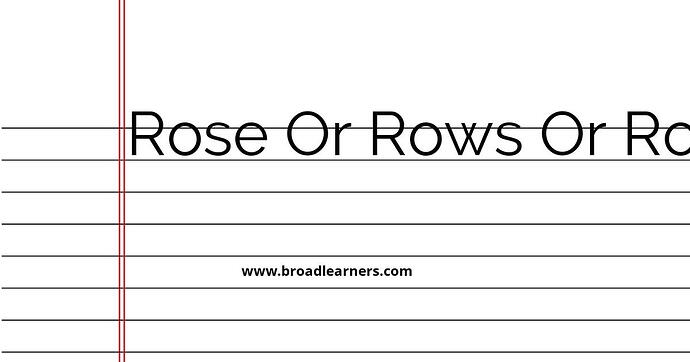'Rose', 'rows', and 'rose' are commonly confused words in English grammar. Understanding the difference between these words is important to use them correctly in written and spoken English.
'Rose' is a noun that refers to a type of flowering plant that typically has thorny stems and fragrant flowers. It can also be used as a verb to describe the action of moving upward or increasing in value or level.
'Rows' is the plural form of the noun 'row', which refers to a line of things or people arranged side by side. It can also be used as a verb to describe the action of arranging or aligning things or people in a line.
'Rose' is the past tense of the verb 'rise', which means to move upward or increase in value or level.
Let's take a closer look at the meanings and usage of 'rose', 'rows', and 'rose'.
| 'Rose' | 'Rows' | 'Rose' |
|---|---|---|
| The word 'rose' is a noun that refers to a type of flowering plant. | The word 'rows' is the plural form of the noun 'row'. | The word 'rose' is the past tense of the verb 'rise'. |
|
|
|
To remember the difference between 'rose', 'rows', and 'rose', it can be helpful to understand their different meanings and usage:
- 'Rose' is a noun referring to a flower or an action of moving upward.
- 'Rows' is the plural form of the noun 'row', describing a line of things or people.
- 'Rose' is the past tense of the verb 'rise'.
Here are some examples of correct usage:
- I planted a rose bush in my garden.
- She arranged the books in neat rows on the shelf.
- The sun rose above the horizon.
Remembering the correct usage of 'rose', 'rows', and 'rose' will improve your grammar and communication skills.
